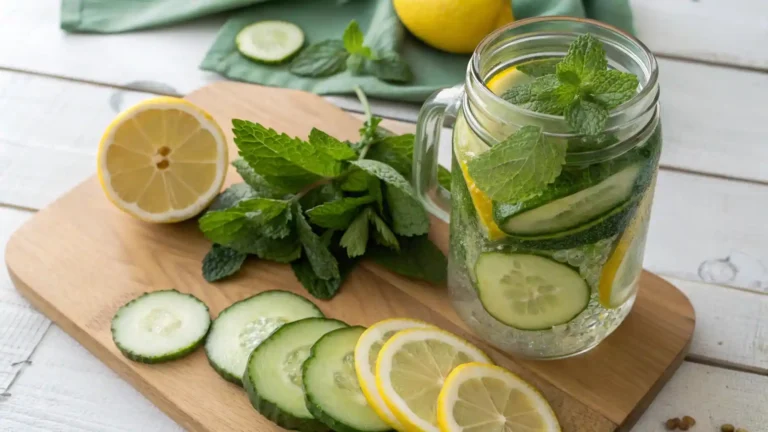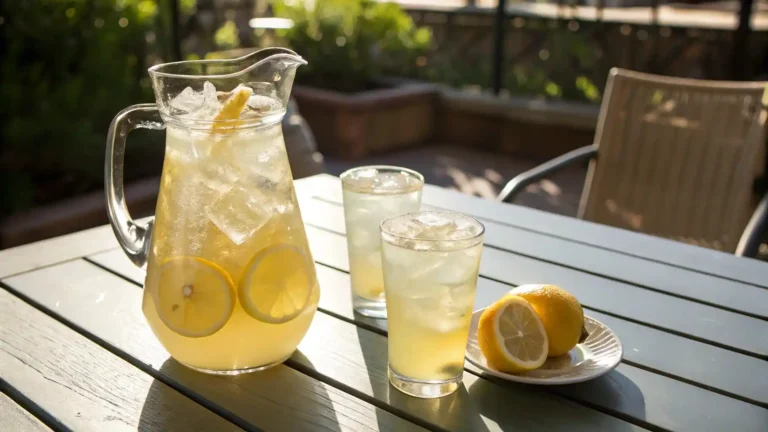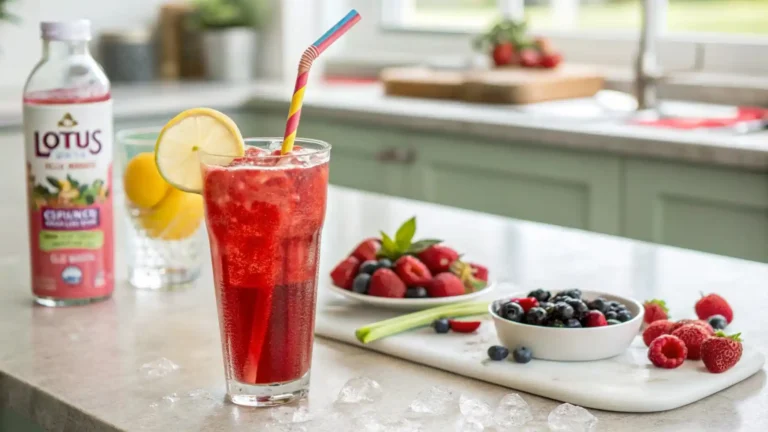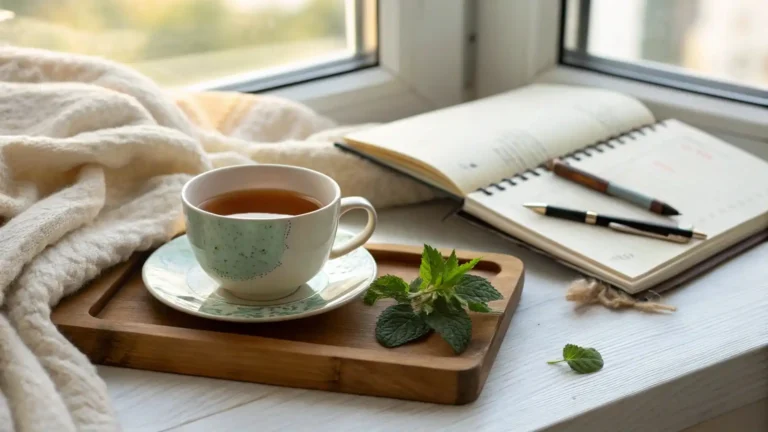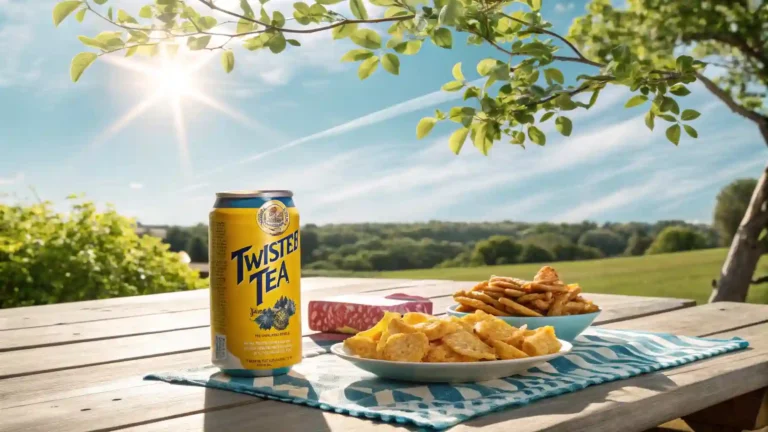What Is the Tea Used in Chinese Restaurants? How to Enjoy It at Home Like a Local
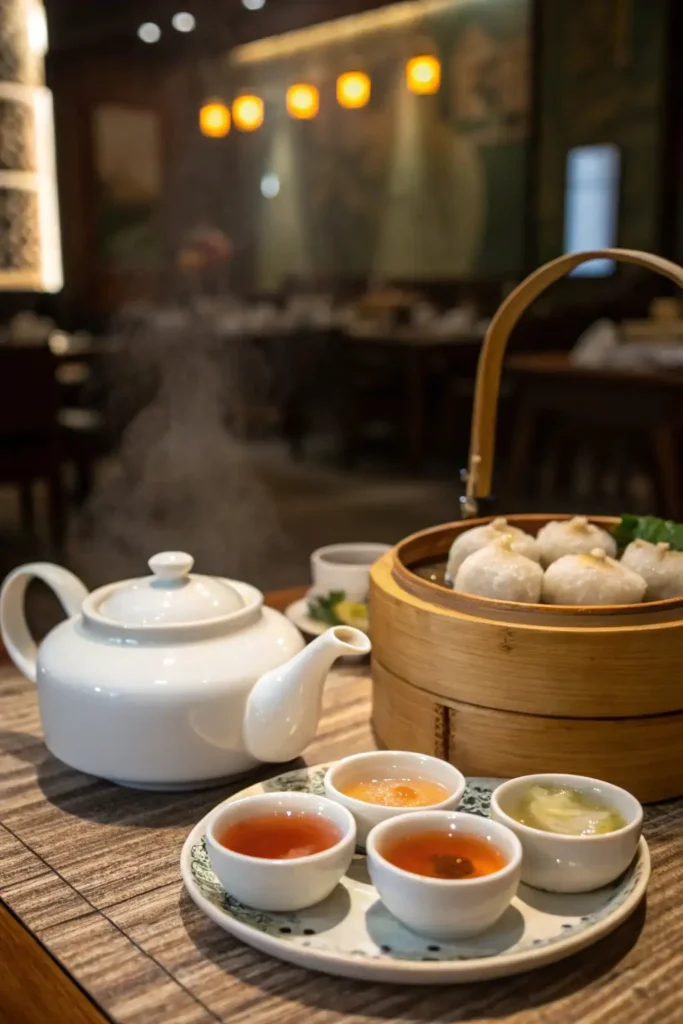
If you’ve ever dined at a Chinese restaurant, you’ve likely had this experience: you sit down, and before the appetizers even hit the table, a small pot of warm, fragrant tea appears like magic. No sugar packets, no lemon slices, just that soothing, slightly earthy aroma wafting from a porcelain cup. It’s comforting, familiar, and somehow always perfect with dumplings, stir-fry, or dim sum.
But what is the tea used in Chinese restaurants?
Whether you’re simply curious about that signature brew or hoping to recreate the experience at home, you’re not alone. This question pops up often, on forums, food blogs, and yes, even at dinner tables. And it turns out, there’s more to that little pot of tea than you might think.
In this article, we’ll uncover the most common types of tea served in Chinese restaurants, explore why they’re chosen, dive into their health benefits, and even show you how to enjoy them at home like a local. We’ll also look at tea etiquette in Chinese culture, how to brew restaurant-style tea properly, and where you can find authentic varieties online or locally.
So grab your favorite cup, we’re about to steep in some seriously flavorful tradition.
Table of Contents
🫖 What Is the Tea Used in Chinese Restaurants?
Ever wondered what kind of tea they serve at Chinese restaurants?
The answer isn’t always the same, but the most commonly served teas are Oolong and Jasmine. Depending on the restaurant’s region, style, or tradition, you might also be sipping Pu-erh, Chrysanthemum, or a simple Chinese green tea. These teas are beloved not only for their delicate flavor, but also for how well they complement the richness and variety of Chinese cuisine.
In most Cantonese-style restaurants, especially those serving dim sum, Oolong tea is the go-to choice. It strikes a perfect balance: not too strong, not too light, with a smooth and slightly roasted flavor. It helps cut through oily foods, making it the ideal companion to fried dumplings or pork buns.
You’ll also often find Jasmine tea, a green tea infused with fragrant jasmine blossoms. Its floral aroma is instantly recognizable, and it offers a gentler, slightly sweet taste that’s popular with first-time tea drinkers.
🍵 Why Do Restaurants Choose These Teas?
Chinese restaurants typically choose teas that:
- Aid digestion
- Cleanse the palate
- Reflect cultural traditions
- Complement a wide range of flavors found in Chinese cuisine
In short, the tea isn’t just a nice touch, it’s an integral part of the meal experience.
🍃 Most Common Types of Tea Served in Chinese Restaurants
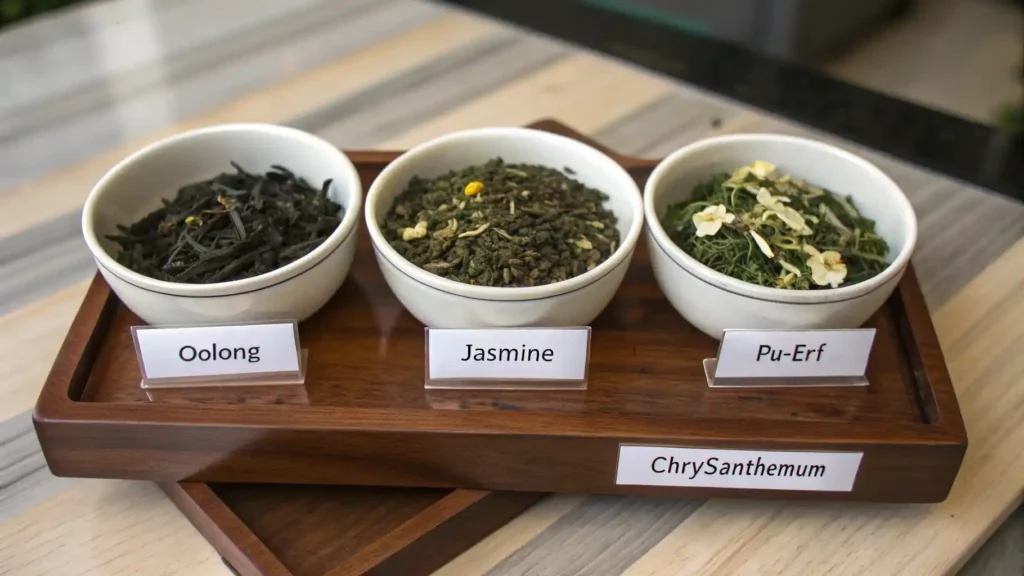
Chinese restaurants don’t just pick any tea off the shelf, the teas they serve are steeped in centuries of tradition, taste pairing, and health-conscious choices. While the selection can vary by region and style of cuisine, these are the most common types of tea you’ll encounter:
1. Oolong Tea
A favorite in many Cantonese-style restaurants, Oolong tea is a semi-oxidized tea that falls between green and black tea. It has a smooth, toasty flavor with floral or nutty undertones, depending on the variety.
- Why it’s served: Its balanced taste cuts through fried or greasy dishes, making it perfect for meals like dim sum or stir-fried noodles.
- Flavor: Earthy, roasted, slightly floral
- Caffeine: Medium
- Popular varieties: Tie Guan Yin (Iron Goddess), Wuyi Rock Oolong
2. Jasmine Tea
Jasmine tea is a classic choice, made by scenting green tea leaves with jasmine blossoms. It’s lighter and more fragrant, offering a sweet floral aroma that pairs beautifully with delicate dishes like dumplings or steamed fish.
- Why it’s served: Its calming fragrance enhances the overall dining atmosphere.
- Flavor: Floral, sweet, mild
- Caffeine: Low to medium
- Pro tip: Often the go-to in fusion or more upscale Chinese restaurants.
3. Pu-erh Tea
A fermented, aged tea mostly found in more traditional or high-end Chinese restaurants. Pu-erh has a rich, earthy taste and is prized for its health benefits and deep cultural roots.
- Why it’s served: It’s believed to aid digestion and cut through heavy or fatty foods like roast duck or pork belly.
- Flavor: Woody, deep, mellow
- Caffeine: Medium to high
- Origin: Yunnan Province
4. Chrysanthemum Tea
Made from dried chrysanthemum flowers, this caffeine-free herbal tea is commonly served in some Chinese banquet settings or for guests who prefer non-caffeinated options.
- Why it’s served: Light, floral, and cooling, especially good for balance in Traditional Chinese Medicine.
- Flavor: Floral, mild, slightly sweet
- Caffeine: None
- Bonus: Often paired with Pu-erh in dim sum teapots.
5. Green Tea
Simple and subtle, Chinese green tea (like Longjing or Mao Feng) is a common table tea in northern-style restaurants. It’s lighter than Oolong or Pu-erh and has a clean, grassy note.
- Why it’s served: Refreshing and neutral, great with everything from rice dishes to spicy Sichuan cuisine.
- Flavor: Fresh, grassy, slightly bitter
- Caffeine: Low
📝 Tea Comparison Table
| Tea Type | Flavor Profile | Caffeine | Best With |
|---|---|---|---|
| Oolong | Roasted, floral, nutty | Medium | Fried foods, dim sum |
| Jasmine | Floral, sweet, smooth | Low–Medium | Dumplings, light dishes |
| Pu-erh | Earthy, woody, aged | Medium–High | Roasted meats, heavy meals |
| Chrysanthemum | Light, floral, delicate | None | Spicy food, herbal choice |
| Green Tea | Grassy, crisp, fresh | Low | Mild or spicy dishes |
These teas are more than just beverages, they’re flavor enhancers, digestive aids, and cultural storytellers, poured quietly alongside your meal. And now that you know what you’re sipping, you’ll start noticing just how perfectly they match the food on your plate.
🥢 Why Tea Is Served in Chinese Restaurants
Ever wonder why tea shows up at your table before you’ve even ordered your food?
It’s not just a polite gesture, in Chinese dining culture, tea plays a functional, cultural, and even philosophical role. It’s served for a reason, and once you understand the “why,” you’ll start to appreciate that little pot a whole lot more.
1. Tea Aids Digestion
One of the biggest reasons tea is served in Chinese restaurants is to help with digestion. Many Chinese dishes are rich, oily, or fried, think spring rolls, dim sum, or crispy duck. Teas like Oolong and Pu-erh are known for their ability to cut through grease and ease the digestive process.
In Traditional Chinese Medicine (TCM), warm liquids like tea help promote Qi (energy flow) and prevent “cold stomach,” which is believed to slow digestion.
2. It Cleanses the Palate
Tea is also a natural palate cleanser. Whether you’re switching from spicy Sichuan chicken to sweet and sour pork, or sampling a variety of dim sum, tea helps reset your taste buds between bites.
- Green tea = refreshing and grassy
- Jasmine = light and floral
- Oolong = smooth with a touch of toastiness
Each one subtly prepares your palate for the next flavor.
3. It Sets a Welcoming Tone
Serving tea at the beginning of a meal is a sign of hospitality and respect. In Chinese culture, offering tea is a way of saying, “Welcome, relax, you’re in good hands.”
That pot of tea is the restaurant’s way of creating a calm, inviting atmosphere, one where conversation flows and stress melts away.
4. Tea Reflects Yin-Yang Balance
Chinese cuisine is all about balance, and tea plays a vital part in this. Hot tea (yang) is often served to balance cold dishes (yin), maintaining harmony in both the meal and the body.
This philosophy is deeply rooted in TCM and is still practiced today, especially in traditional households and restaurants that honor these ancient principles.
5. It’s Just a Habit, a Delicious One
Of course, sometimes it’s just tradition. Many Chinese diners expect tea with their meal, it’s as natural as getting napkins and chopsticks. Restaurants keep the practice going because it’s deeply embedded in the dining experience.
💬 Fun Fact:
In many Chinese restaurants, refilling the teapot is a subtle cue from the staff that they care about your experience, and in turn, tapping your fingers on the table after a pour is a traditional gesture of thanks.
💚 Health Benefits of Chinese Restaurant Tea
That free pot of tea you get at a Chinese restaurant? It’s more than a tasty companion to your meal, it’s packed with centuries of wellness wisdom and some legit science-backed benefits too.
Different teas offer different health perks, but whether it’s Oolong, Jasmine, or Pu-erh, the underlying message is the same: tea is good for your body, your mind, and even your metabolism.
1. Aids Digestion (Especially After Heavy Meals)
This one’s a classic, and it’s no myth. Teas like Oolong and Pu-erh are often served with rich or oily foods because they help your stomach process fat more efficiently.
- Oolong tea has enzymes that support lipid metabolism.
- Pu-erh tea is fermented, which introduces probiotics that promote gut health.
No wonder it’s the go-to after roast pork or fried spring rolls.
2. Rich in Antioxidants
Chinese teas are naturally high in polyphenols, which are plant-based antioxidants known to fight inflammation and neutralize free radicals. These antioxidants may help:
- Boost immunity
- Support skin health
- Reduce oxidative stress (linked to aging and chronic disease)
Green tea and Jasmine tea are especially potent in this department.
3. Supports Heart Health
Studies suggest that drinking tea regularly may help lower bad cholesterol (LDL) and reduce blood pressure. Oolong and Pu-erh in particular have been linked to cardiovascular benefits.
💡 Pro tip: Unlike sugary drinks, Chinese restaurant teas are almost always served plain, which keeps them heart-healthy by default.
4. Gentle Energy Without the Crash
Chinese teas contain moderate levels of caffeine, enough to give you a little mental boost, but without the jittery spike of coffee.
- Green tea = low caffeine
- Jasmine tea = moderate
- Oolong/Pu-erh = moderate to high
Plus, the L-theanine in tea promotes calm focus, making it a great beverage for productivity and relaxation.
5. Caffeine-Free Options Exist (Like Chrysanthemum Tea)
If you’re sensitive to caffeine or having a late-night meal, Chrysanthemum tea is your friend. It’s floral, soothing, and caffeine-free, perfect for winding down without sacrificing flavor.
📌 Quick Recap Table
| Tea Type | Main Health Benefit |
|---|---|
| Oolong | Boosts digestion, aids fat metabolism |
| Jasmine | High in antioxidants, calming |
| Pu-erh | Gut health, cholesterol control |
| Green Tea | Immunity, anti-aging, brain function |
| Chrysanthemum | Caffeine-free, reduces internal heat |
🍵 How to Brew Chinese Restaurant Tea at Home

Once you know what kind of tea you’re drinking in a Chinese restaurant, the next step is simple: bring that experience home.
Brewing Chinese tea doesn’t have to be intimidating or overly ceremonial. Whether you’re using a traditional teapot or a simple infuser mug, here’s how to get that smooth, aromatic restaurant-style tea right in your own kitchen.
🔧 What You’ll Need
- Loose-leaf tea (Oolong, Jasmine, Pu-erh, or Green Tea)
- Teapot (glass, ceramic, or Yixing clay)
- Infuser or strainer
- Filtered water
- Teacups or small mugs
✨ Optional: For an authentic touch, try brewing with a gaiwan (lidded bowl) or using the Gongfu style for stronger flavor control.
🫖 Basic Brewing Instructions (Western Method)
This method is beginner-friendly, great for everyday use, and works well for most Chinese teas.
| Tea Type | Water Temp | Steep Time | Tea Amount (per 8oz) |
|---|---|---|---|
| Oolong | 185–205°F | 3–5 min | 1 tsp |
| Jasmine | 175–185°F | 2–3 min | 1 tsp |
| Pu-erh | 200–212°F | 4–6 min | 1 tsp |
| Green Tea | 160–180°F | 2–3 min | 1 tsp |
Steps:
- Bring your water to the proper temperature.
- Pre-warm your teapot by swirling hot water and discarding it.
- Add loose-leaf tea into your teapot or infuser.
- Pour water over the leaves and cover.
- Let steep based on the chart above.
- Strain into cups and serve immediately.
🍃 Gongfu Style (For the Tea Enthusiast)
Want a deeper, more traditional tea experience? Try the Gongfu method, often used for Oolong and Pu-erh teas.
Basic steps:
- Use a small teapot or gaiwan.
- Use more tea (1–2 tbsp per 4 oz water).
- Steep for shorter times (starting at 10–15 seconds, increasing each round).
- Do multiple infusions, some teas can go 5–10 rounds!
This method brings out layered flavors and aromas, just like a real tea house experience.
💡 Tips for Best Results
- Use loose-leaf tea over bags, better flavor, quality, and aroma.
- Don’t over-steep, bitterness usually comes from too much time, not strong tea.
- Rinse tea leaves quickly (especially Pu-erh) to “wake them up.”
- Use filtered water, chlorine and minerals can ruin the taste.
🛒 Where to Find Quality Tea
- Local Asian supermarkets (look for tins or vacuum-sealed bags)
- Specialty online shops: Yunnan Sourcing, Teavivre, Mei Leaf
- Amazon (trusted brands: Ten Ren, Prince of Peace, Numi)
🛍️ Where to Buy Authentic Chinese Tea
Now that you know what tea is used in Chinese restaurants, and how to brew it, the next step is finding the real stuff. Not all tea is created equal, especially when it comes to flavor, aroma, and freshness. A box of dusty teabags from the supermarket just won’t cut it.
Here’s where to get authentic Chinese tea that delivers the full experience, whether you’re new to tea or diving deep into traditional brewing.
🏬 1. Local Asian Supermarkets
If you live in or near a city with a Chinese, Taiwanese, or Vietnamese community, head to an Asian grocery store. Look for these in the tea aisle:
- Loose-leaf Oolong or Jasmine in metal tins
- Vacuum-sealed bags labeled by region (e.g. “Fujian Oolong”)
- Trusted brands: Ten Ren, Gold Kili, Triple Leaf, Prince of Peace
💡 Tip: Ask a staff member for recommendations, they often know the best brands.
🌐 2. Online Tea Specialty Shops (Best for Purists)
For top-shelf tea sourced directly from China, go with reputable online tea retailers that focus on freshness and single-origin batches:
- Yunnan Sourcing – legendary for Pu-erh, Oolong, and green teas from Chinese tea farms
- Teavivre – great for beginners and tea enthusiasts alike
- Verdant Tea – small-batch, organic-focused artisan teas
- Mei Leaf – well-known for high-quality Gongfu tea kits and flavor-forward sourcing
These shops often provide harvest dates, region info, and brewing guides, gold for tea nerds and trust signals for Google.
🛒 3. Amazon (Convenient + Accessible)
Amazon offers convenience, especially for beginners. While not every listing is authentic, there are great options if you stick with trusted sellers:
- Ten Ren Oolong Tea – smooth and restaurant-quality
- Prince of Peace Jasmine Tea – good entry-level floral green tea
- Numi Organic Chinese Breakfast – a bolder black tea with Chinese roots
- Rishi and Harney & Sons – premium brands that offer good quality Jasmine and Oolong blends
Pro tip for shoppers:
Look for:
- Loose-leaf packaging
- Harvest or origin listed
- Customer reviews mentioning “authentic,” “restaurant-style,” or “flavorful”
✅ Quick Comparison Table: Where to Buy
| Source | Best For | Pros | Watch Out For |
|---|---|---|---|
| Asian Supermarkets | Affordable, authentic starter teas | In-person browsing, good variety | Hard to verify freshness |
| Specialty Shops | Serious tea lovers, Gongfu brewers | Premium quality, detailed sourcing | Higher cost, shipping time |
| Amazon | Convenience, fast delivery | Easy returns, beginner-friendly | Quality varies by seller |
🙏 Chinese Tea Etiquette: Sip Like a Local
Drinking tea at a Chinese restaurant isn’t just about quenching thirst, it’s a ritual, a respectful gesture, and a moment of quiet hospitality rooted in centuries of tradition.
If you’ve ever noticed the small but meaningful customs around tea in Chinese culture, you’ve seen just a glimpse of its depth. Here’s how to truly enjoy Chinese tea like a local, with cultural understanding, subtle etiquette, and a touch of mindfulness.
🫖 1. Let the Elders Sip First
In Chinese dining etiquette, respect for elders is everything. When tea is poured, it’s customary to serve older family members or guests first, before pouring for yourself. It’s a small act of humility that shows care and tradition.
At home or in traditional settings, tea may even be used to show filial piety, a core Confucian value.
✋ 2. Tap the Table to Say “Thank You”
This is one of the most charming and widely practiced tea rituals in Chinese restaurants.
When someone pours you tea, tap your index and middle finger on the table twice, lightly, as a silent gesture of thanks.
🍶 3. Never Let the Teapot Go Empty
At most Chinese tables, refilling the teapot is a shared responsibility. If you notice it’s getting low, don’t wait, refill it for the table. In some restaurants, you can leave the lid tilted or off-center to signal the server that more hot water is needed.
💡 Pro tip: In dim sum spots, staff are trained to spot this subtle sign and replace or refill your pot promptly.
🍵 4. Don’t Overfill Cups
In traditional Chinese tea etiquette, cups are filled about 70–80% full, never to the brim. This leaves room for aroma and avoids spills. A full cup can be considered overbearing or disrespectful, especially in formal settings.
🧎♀️ 5. Tea as a Gesture of Apology or Gratitude
Tea can also play a role in more formal gestures:
- Pouring tea for someone you’ve wronged = an act of apology
- Offering tea to elders during holidays or family gatherings = a sign of deep respect
These are often practiced during Chinese New Year, weddings, or significant life events.
🍃 6. Embrace the Pause
Tea drinking in Chinese culture isn’t rushed. Whether in a busy restaurant or a quiet home, there’s an underlying message in each cup: slow down, enjoy the moment, connect with those around you.
📌 Summary Table: Quick Tea Etiquette Tips
| Custom | What It Means |
|---|---|
| Tap table after being poured tea | Silent “thank you” gesture |
| Serve elders first | Respect and family hierarchy |
| Don’t overfill cups | Shows restraint and consideration |
| Tilt teapot lid | Request for hot water |
| Pouring tea = apology/gratitude | Cultural act of humility or honor |
FAQ
🔸 What is the tea they serve at Chinese restaurants called?
In most Chinese restaurants, the tea served is typically Oolong tea or Jasmine tea. Some may also offer Pu-erh, Green tea, or Chrysanthemum tea, depending on the region and restaurant style.
🔸 Can I buy the same tea that Chinese restaurants use?
Yes! You can find authentic Chinese tea online (like from Yunnan Sourcing or Teavivre), at Asian supermarkets, or even on Amazon. Look for trusted brands and loose-leaf options for the most authentic taste.
🔸 What’s the difference between Jasmine tea and Oolong tea?
Jasmine tea is typically a green tea scented with jasmine flowers, offering a light, floral flavor.
Oolong tea is partially oxidized and has a richer, more robust flavor, with roasted or fruity notes.
Both are popular in Chinese restaurants, but offer very different taste experiences.
Can I request a specific tea at a Chinese restaurant?
Absolutely! Many Chinese restaurants have a few tea options available, even if they don’t list them on the menu. If you prefer a floral Jasmine tea or a caffeine-free option like Chrysanthemum, it’s worth asking, especially in more traditional or upscale establishments.
🧧 Conclusion
So, what is the tea used in Chinese restaurants?
Now you know: it’s usually a warm, comforting cup of Oolong or Jasmine tea, sometimes Pu-erh, Green tea, or Chrysanthemum, depending on the restaurant and regional style. But more than just a drink, that little pot of tea carries centuries of tradition, wellness, and hospitality in every pour.
Whether it’s cleansing your palate between bites, supporting digestion, or simply offering a quiet moment before the meal begins, Chinese restaurant tea is an experience, one that’s easy to bring home.
From understanding the types of tea, to learning how to brew it like a pro, to observing the charming customs like finger tapping or pouring for elders, you’re now ready to enjoy Chinese tea the authentic way. 🍃
🍽️ Keep the Flavor Flowing
Now that you’ve learned how to enjoy Chinese restaurant tea like a local, why not pair your next brew with a delicious dish from our kitchen?
Here are a few handpicked recipes that go perfectly with a warm cup of tea:
- 🥗 BJs Tomato Mozzarella Salad Recipe, light, fresh, and the perfect starter
- 🍜 Texas Roadhouse Green Bean Recipe, a savory side that pairs beautifully with Oolong
- 🐟 Cheesecake Factory Miso Salmon Recipe, delicate flavors meet bold tea
- 🧁 Chocolate Chip Banana Bread, ideal with Jasmine or Chrysanthemum tea
- 🍹 Lemon Balm Tea Recipe for Weight Loss, herbal, healthy, and naturally refreshing
Explore more at DeenRecipes.com, where flavor meets comfort, one recipe at a time.

